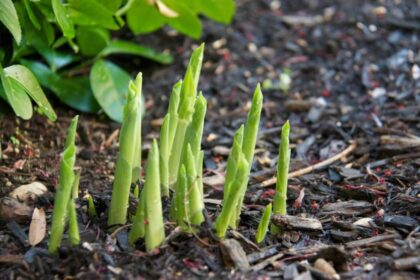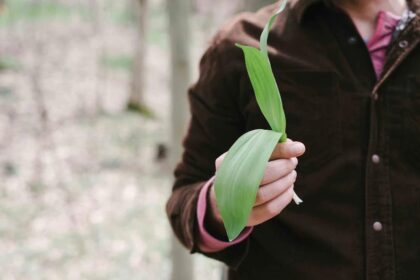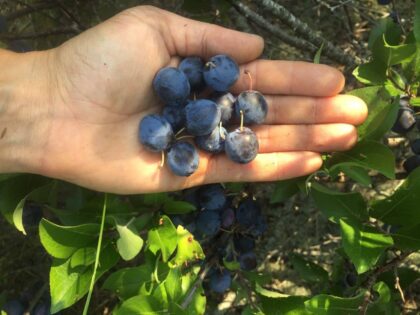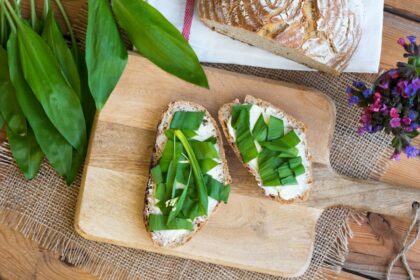Susi Gott Séguret Traditional Appalachian Foodways
Susi Gott Séguret learned to appreciate fresh ingredients growing up in the fields and forests of her family’s 300 acre Madison County homestead in Western North Carolina. “I grew up with the best products ever,” says Susi, “because we grew or foraged for everything we ate. We lived on a very self-sufficient farm and we went to town only twice a year to buy things like coffee, cat food and toilet paper. We grew everything, including the animals, the bees for honey, you name it, the cows for milk and cheese, etc., chickens for eggs, hogs, geese, ducks, rabbits, and goats. My mother prepared our meals without any fuss or muss, so I knew what good products tasted like. Our mother made very simple food, but it had really, really good, pure flavors.”
As a child, Susi would often go out in the morning and wouldn’t return home till sundown. “My roof was the sky and the world at large was my backyard growing up here,” says Susi. “It was amazing. There was so much to see, especially from a child’s perspective. You are right there at eye level with all the plants and you don’t have any qualms about tasting, poking and prodding at things.” Over the years, Susi and her family learned from other members of their community how to feed themselves well from the fields and forests of the place they called home.
“Foraging is what you find based on the land that you have around you,” explains Susi, “How well you know the little folds and pockets and hollers, what grows where and when you’re able to get out there. Gardening is what you do to have something more predictable that you can find on purpose, to have some plants that wouldn’t occur naturally, like tomatoes and various different kinds of lettuce and so on. But sometimes the weeds in the garden are every bit as edible as what you’ve planted, so you don’t have to just pull them up and get rid of them. Lamb’s quarters, chick weed, what we call hoary cress or creasy greens, wood sorrel and onion grass. These are plants that are routinely weeded out of the garden, but you can use them to embellish your plate.”
As an adult, Susi learned from her neighbors how to farm wild edibles traditional in Southern Appalachian foodways, such as ramps and branch lettuce. “When I harvest ramps, I pull them up by the root because ramps profit from being divided. So I just pull them up strategically to thin them out and then I save the root tips from the plants I harvest and I replant them closer to my house so I don’t have to wander as far to find them. We have branch lettuce in abundance on our land, so I might dig up a few plants that grow way over in a distant holler and bring them to a branch [a small stream] that’s closer to home.”
Susi’s fluid understanding of what it means to forage and to farm is common to all traditional food cultures. Foraging is a verb that means “to search widely for food or provisions.” Popular use of the word today generally adds an additional distinction – foraging means to search for edible plants and animals inhabiting wild, uncultivated landscapes. This narrow definition of foraging stems from the common misconception that early humans survived only by hunting and gathering wild foods. Like most other animals, this line of reasoning goes, humans were a foraging species until agriculture was “invented” about six thousand years ago.
Recent anthropological and archeological research tells a different story. It turns out that early humans evolved a variety of strategies for assuring a stable supply of food, medicine, and other useful materials. Hunting and gathering wild foods were important, but there is abundant evidence that early humans also carefully managed the natural environments that they inhabited to enhance production of the foods that they favored by using practices such as plant selection, burning, weeding, tilling and mulching. Even as agriculture evolved across the planet – slowly and at different times – all human cultures continued to depend on this mix of foraging and farming, with farmed foods eventually dominating the food supply of most cultures.
This deep relationship with the ecology of place – expressed as a diverse, nutrient-dense, locally-grown, seasonal diet – sustained our species for most of our history and is key to cultivating community resilience today. Although the way that we eat fuels many of the most “wicked problems” currently threatening our communities, our food system – reimagined using the place-based wisdom of traditional foodways – can also be a powerful source of solutions. We can all contribute to creating these solutions by searching for answers to one simple question: How did the people who came before us eat well in this place? Learning how to produce, process, and prepare local foods in order to eat well within the seasonal cycles of the ecosystem that we call home produces far reaching community resilience benefits, including healthier people, healthier land and water, and healthier local economies.
Susi’s sense of adventure took her far beyond her beloved Madison County home. A short tour of Europe after college turned into a life in France, where she raised three children and gained years of experience using the high quality seasonal ingredients that are the foundation of French home cooking. Back home again after 20 years, and working as the Director of the Seasonal School of Culinary Arts, Susi is once again eating from the land she knows so well. “Part of the pleasure of being back here at this time in my life is talking with people about their food memories and collecting recipes from them – some of which I highlighted in Appalachian Appetite. Interlacing the stories that they have about the place and the things that were important to them with the food, the scents, the aromas bring back memories like nothing else.”
These tastes of home are key ingredients in her kitchen. “They are my anchor, my foundation, the foods that I go to every day,” says Susi. “My key ingredients are ramps and morels and nettles in the spring. Tomatoes and beans and squash in the summer. Apples and chestnuts in the fall. In wintertime, the squashes, the dried beans, and maybe a little more baking.” Who knew cultivating community resilience could taste so good? ![]()





